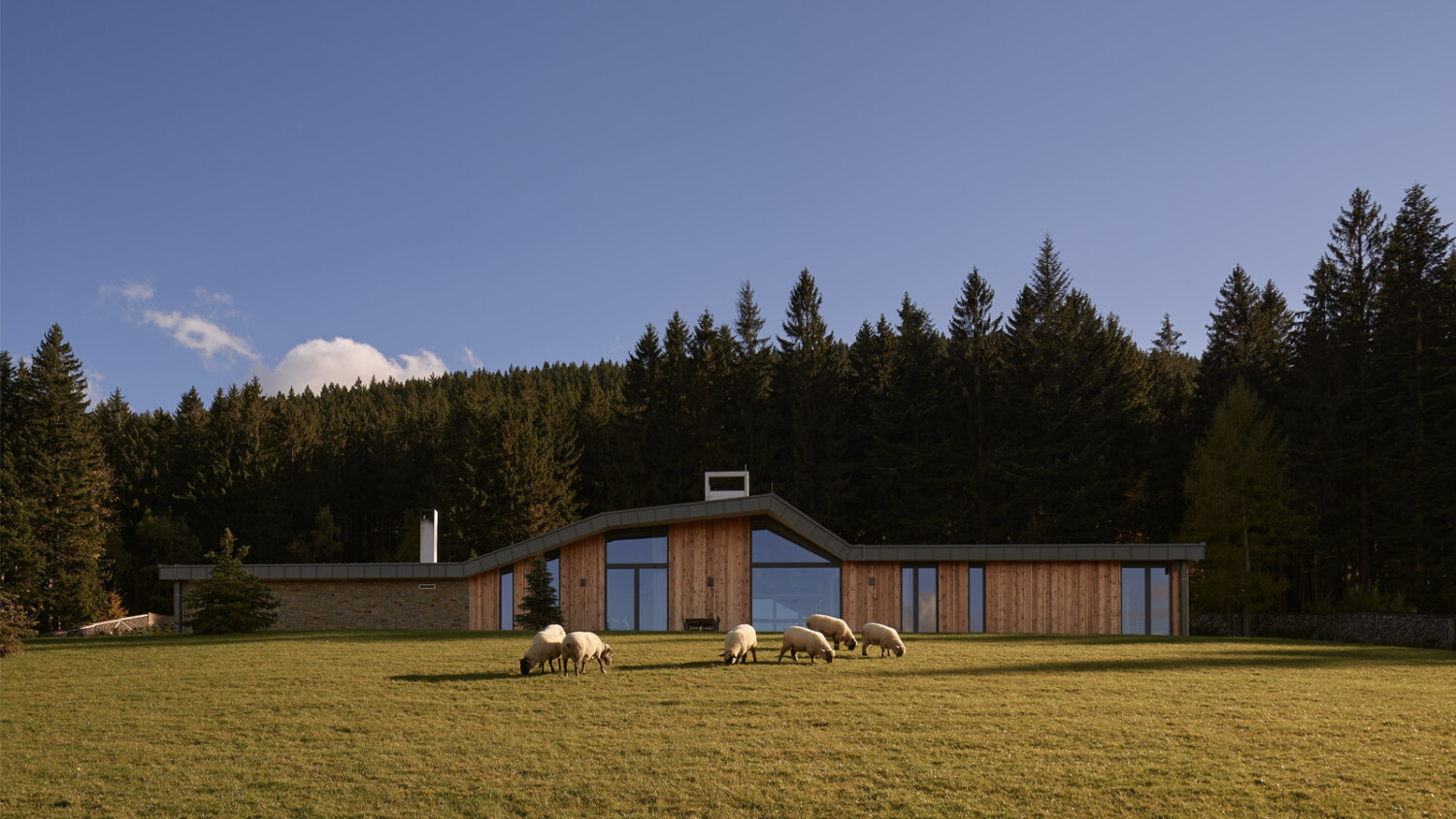Photographing A House Over Two Seasons, Jiří Alexander Bednář Gives Us the Complete Picture
Jiří Alexander Bednář – aka Alex – is an architectural photographer in the Czech Republic who has an absolutely gorgeous project we’ll be taking a look at today. The Villa in the Mountains by WMA Architects has been photographed in two seasons, autumn and winter, and Alex does a beautiful job of showing off this lovely piece of architecture as it relates to its environment.
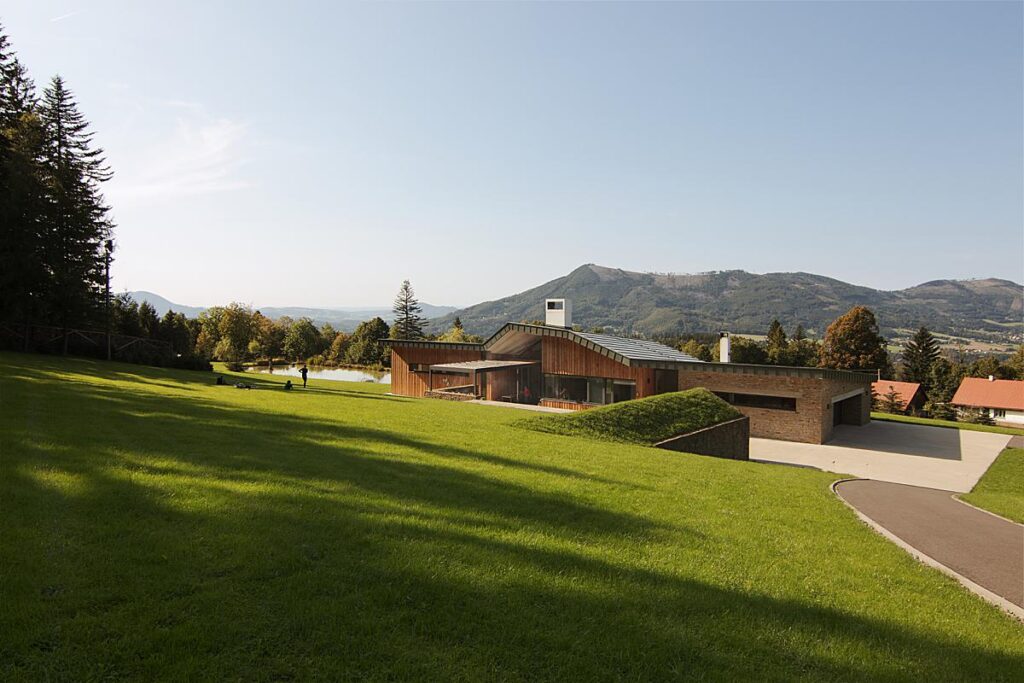
Throughout this project you’ll find that Alex is so good at showing scale and life, adding interest to his images, and helping us understand the complete story of the villa’s design and usage.
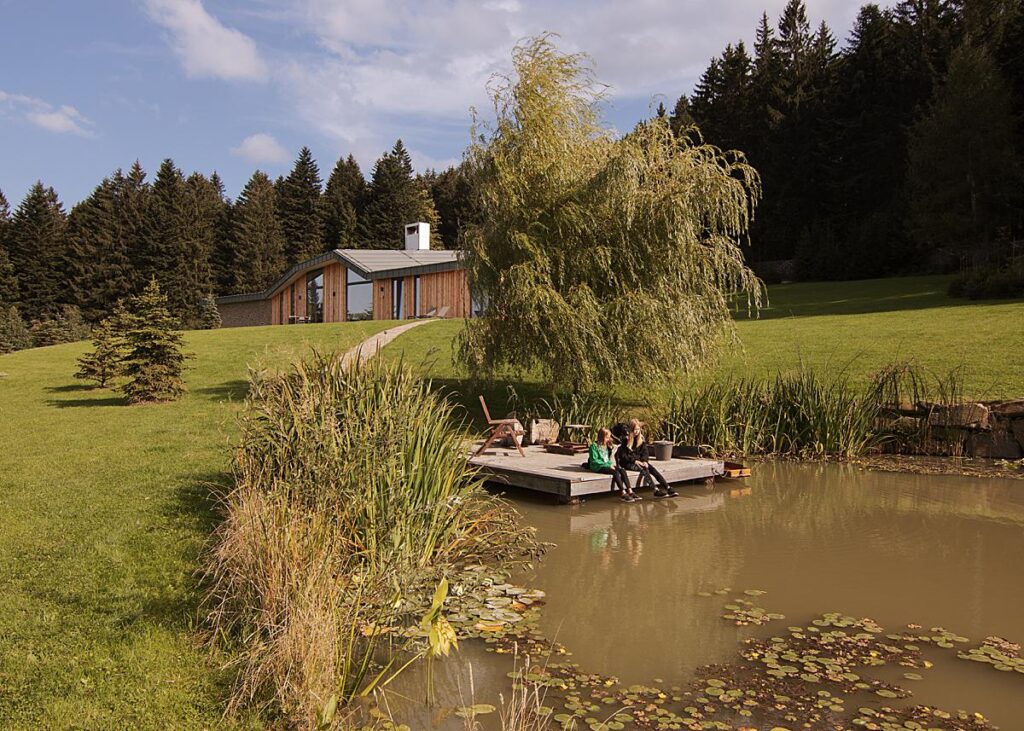
Alex explains how he was linked up with this job, saying “I’ve been following WMA architects for a long time and it was one of the studios I wanted to shoot for, but [previously] I didn’t have enough experience for photographing their level of projects. About a year after my last visit to the WMArch portfolio, the architect Mr. Adam Weczerek contacted me on his own. He appreciated the quality of my photos and asked for my architecture photography and media services.”
This was their first project together, and judging by the quality of Alex’s photographs, I’m sure it won’t be their last.
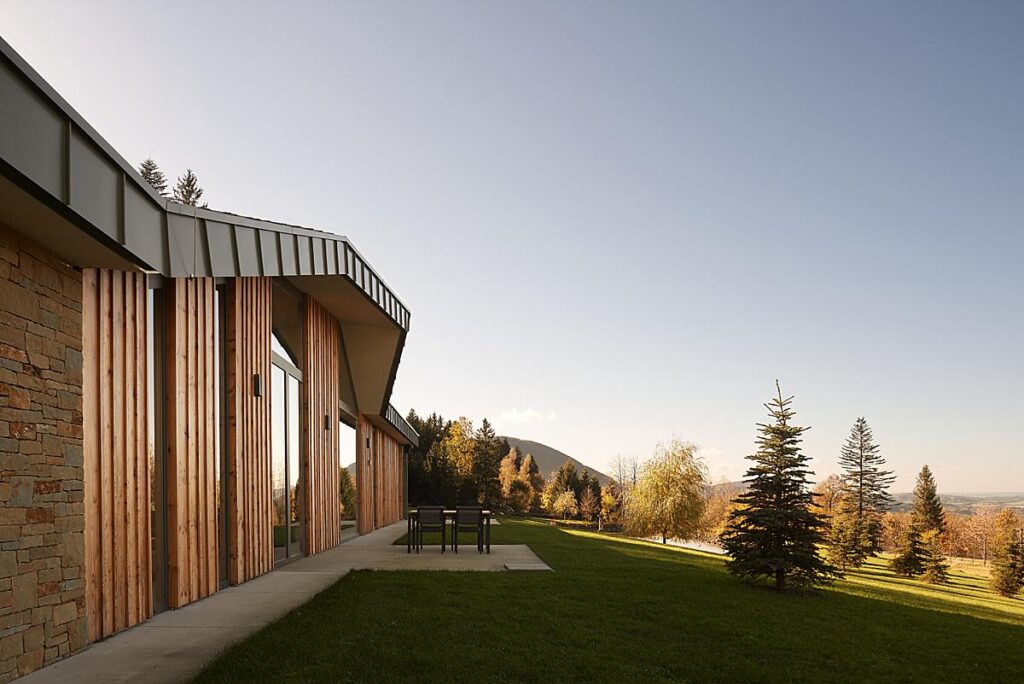
When I saw this photo on Alex’s website, I was sold! What’s not to love?!
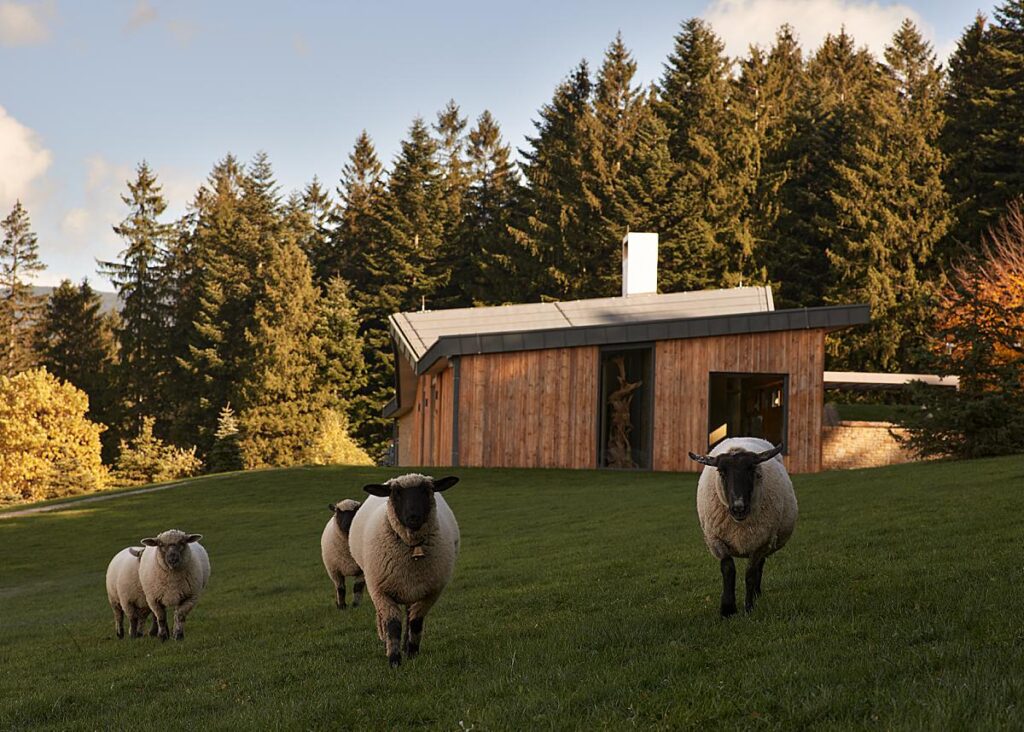
Alex comments on his favorite grouping of images from this project, saying “There are 3 photographs from the same point of view during winter day and night and fall during the day with sheep. It was a huge opportunity, which I would like to introduce as a standard for all exterior projects, where the project is presented during the day and night and during the seasons – I don’t think that only one photo session is enough, at least two, ideally four for a perfect presentation of the architect’s project, the project it will almost never be found in the same climate all year round. Of course, all this goes hand in hand with the price of the photo shoot and time.”
The triptych is perfect. Seeing the house across time and seasons helps us understand the architecture in its context, under various lighting conditions, and how it interacts with its environment.
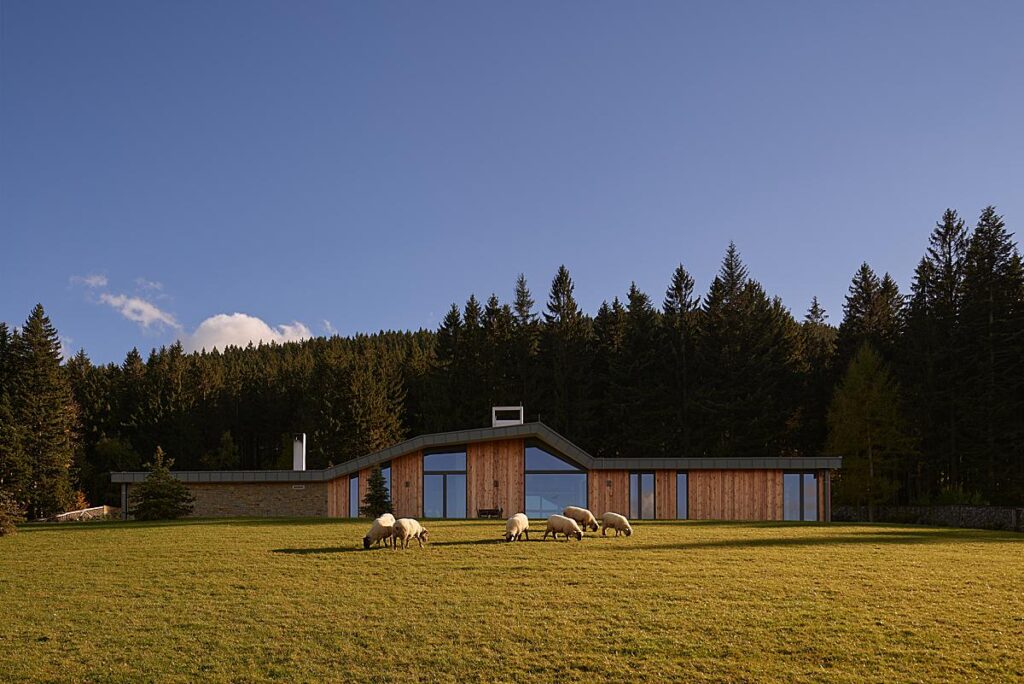
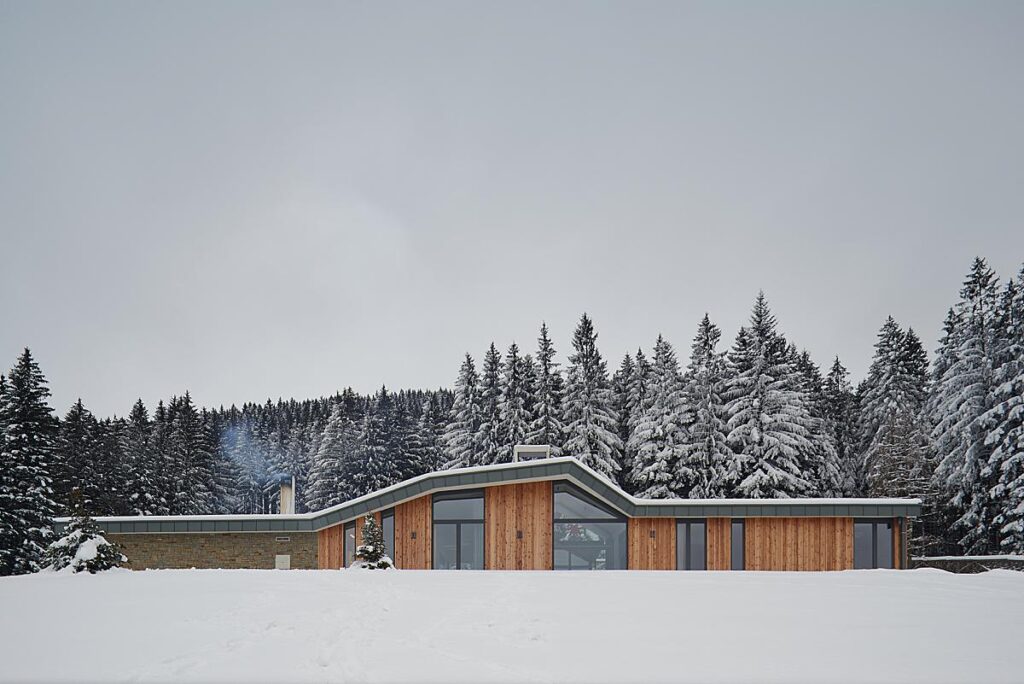
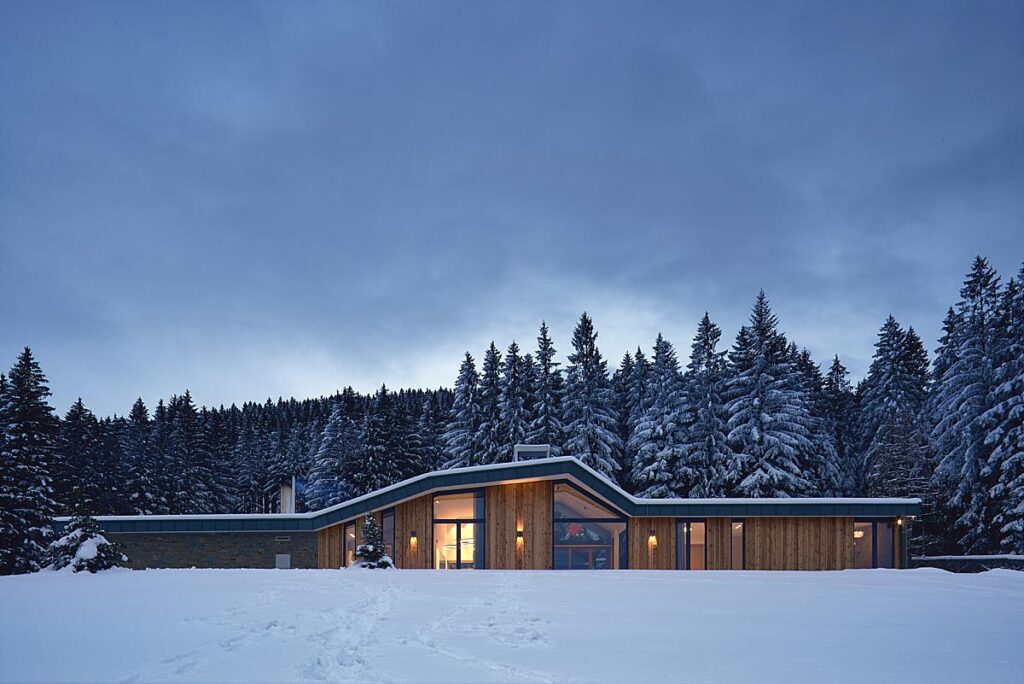
As we shift into Alex’s wintertime images of the villa, there is a wonderful sense of stillness. An aerial shot displays the feeling well.
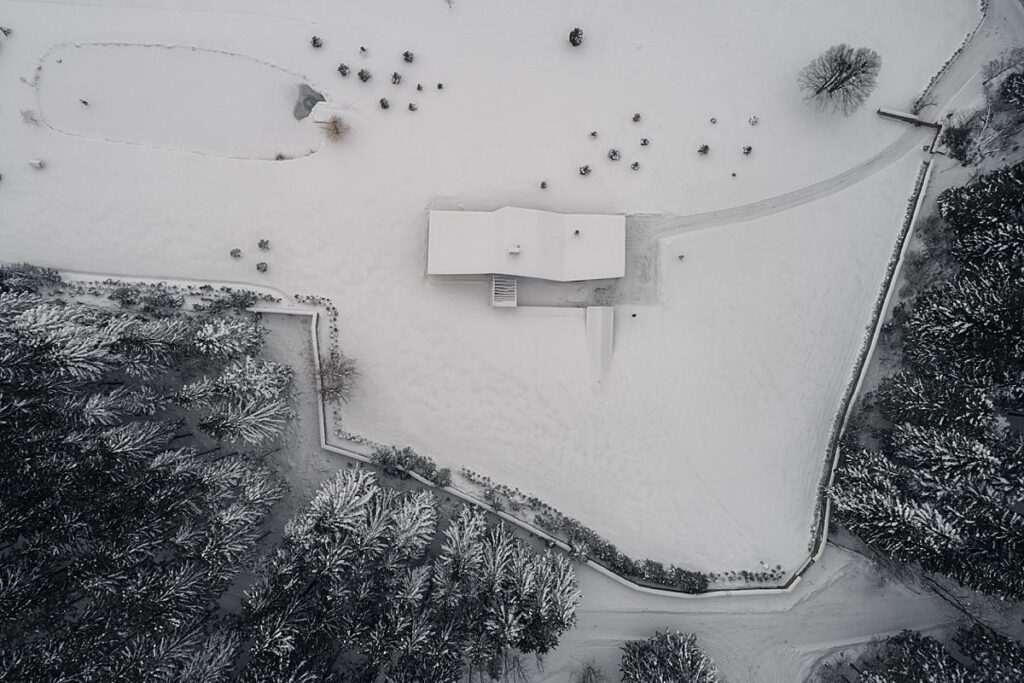
The canvas of snow on the ground draws our eyes right into the villa with little distraction. From this perspective, Alex shows us how the shape of the villa echoes the shape of the mountains beyond.
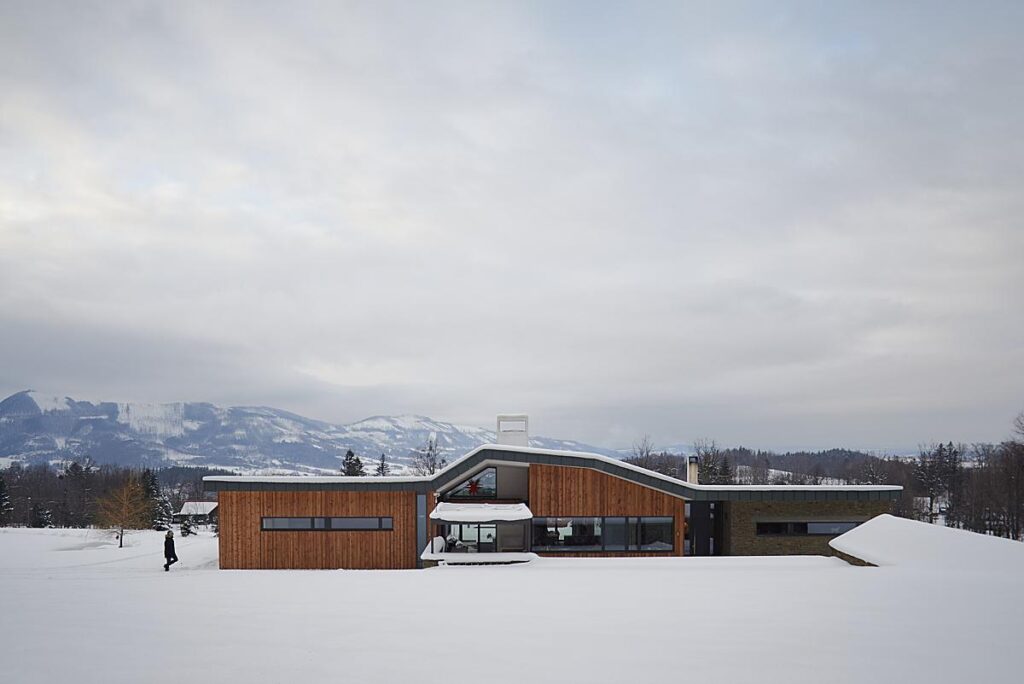
A figure for scale helps us understand the proportions of the villa and adds movement to the scene.
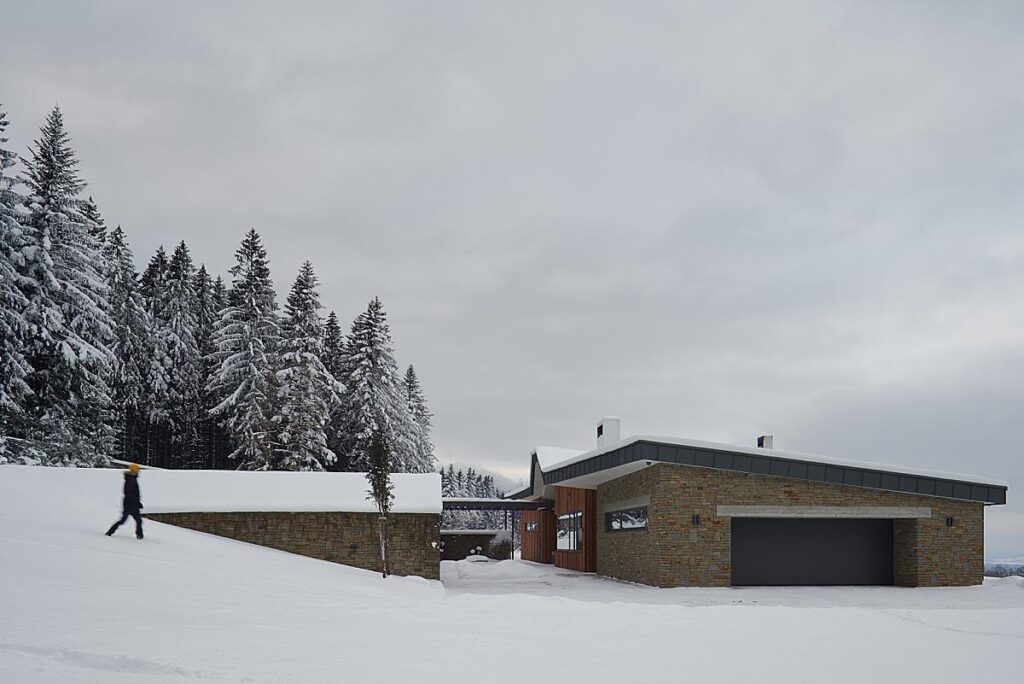
Alex speaks a bit on the shoot day and some of the obstacles he ran into, saying “There were few challenges, but I will take them in order. It was the first time I had to put on snow chains to even get to the location. There was really quite a lot of snow at that time. Fortunately, I was equipped and moved there in complete ski equipment, except for the skis. I went through the property and its surroundings. It was really nice shooting throughout the day, despite the bad weather.”
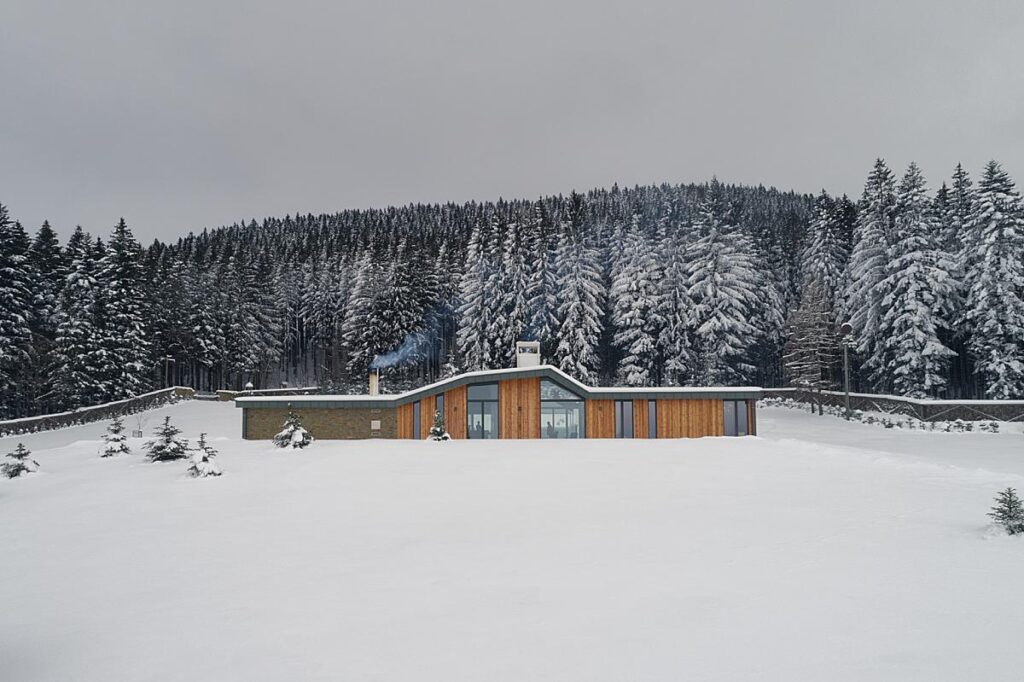
I appreciate how, throughout this project, Alex uses different figures – and animals – to convey purpose and life. In the autumn images, we met the sheep on the property. In the wintertime interiors, we meet the herding dog. It fleshes out the story of this home and adds plenty of character.
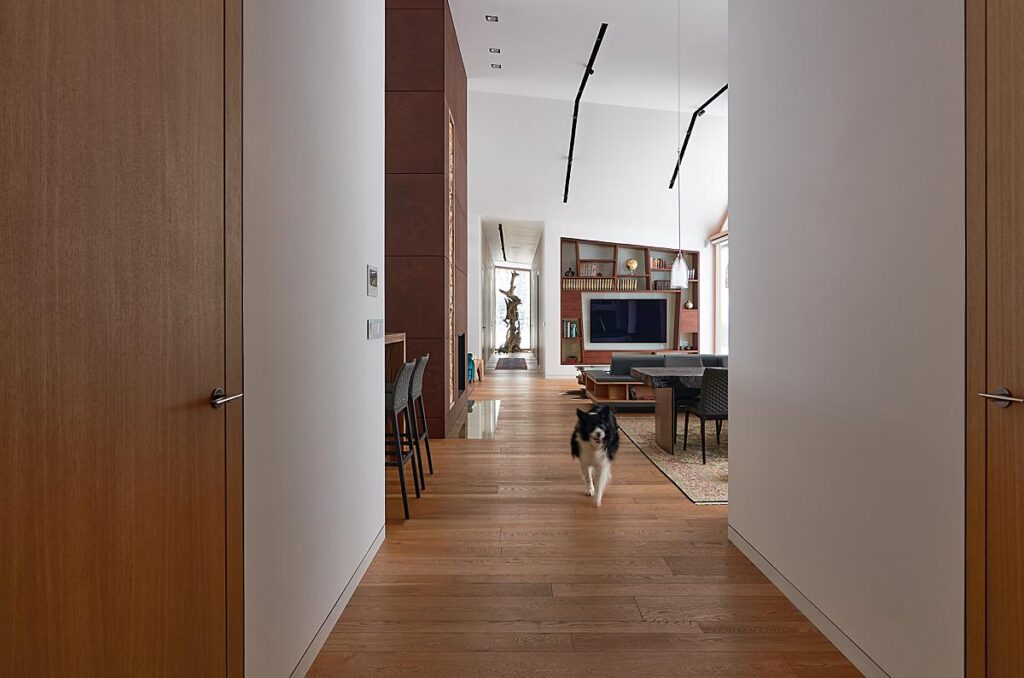
Inside, Alex used almost every available inch of the house to fit the camera in the right place for the right compositions. Not using a Camranger or tethering at the time, he had to squeeze himself behind the camera to make these beautiful shots.
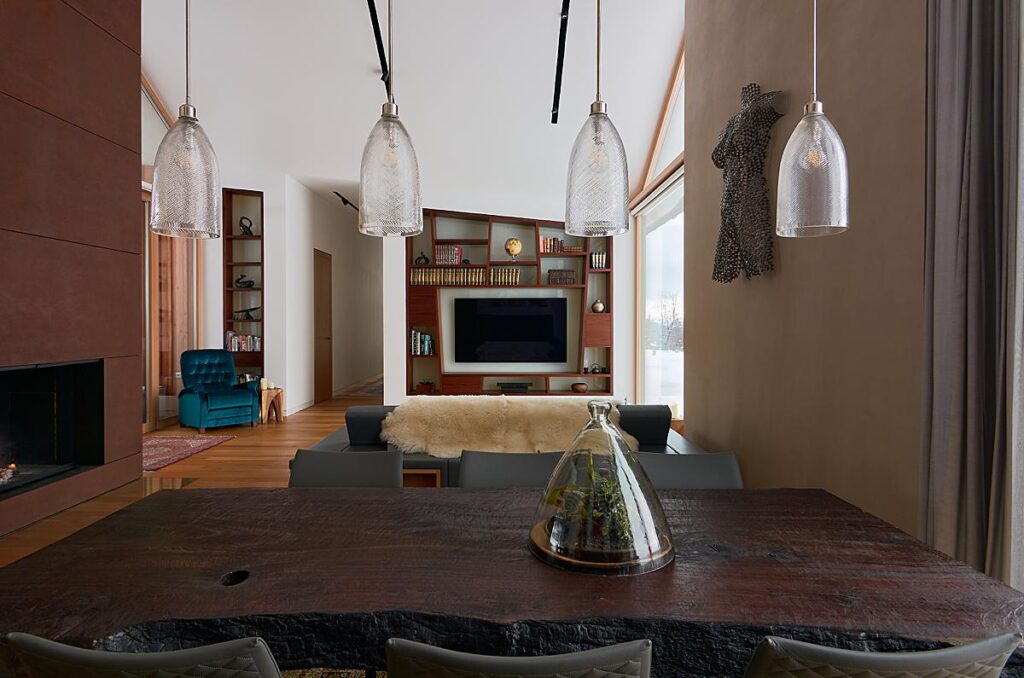
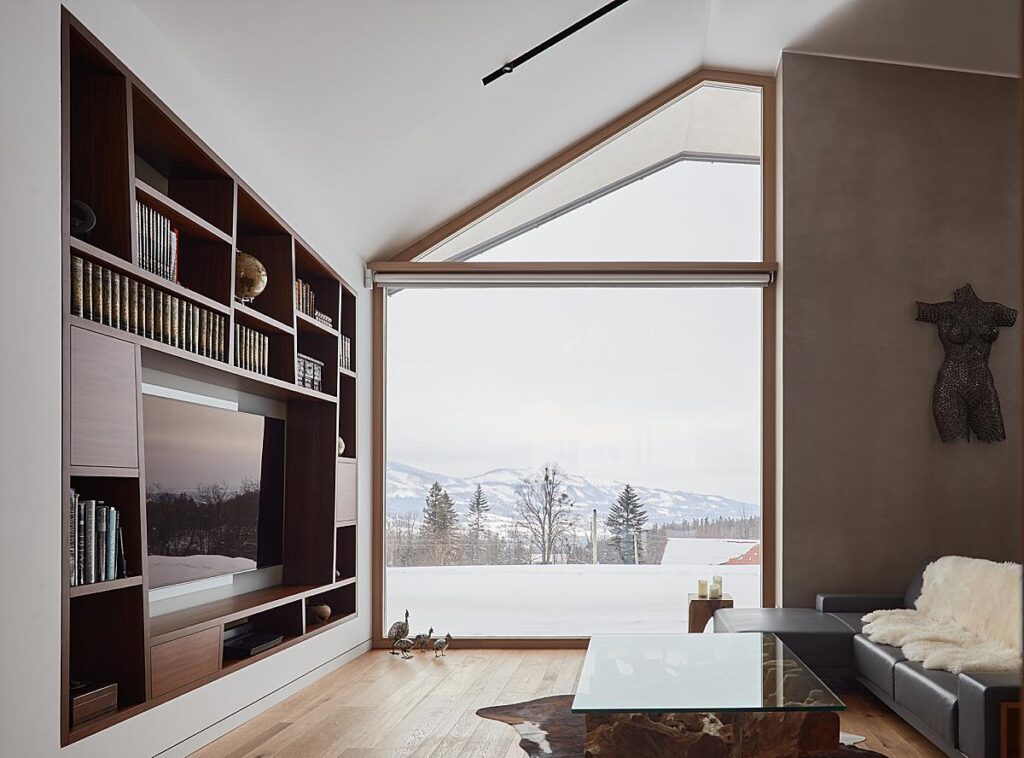
“Once I download the photos to Capture One, I back everything up twice via Time Machine. Backing up is very important to me personally, as an ex-programmer,” Alex explains. “Then I go through all the photos and since I shoot 3–5 exposures, I always choose the ideal one and mark it.
I then select from this selection until I have selected only the best photos with 5 stars. But I will send the client all the photos taken (except the technically bad ones) and in a separate folder, I will send them my recommended selection for editing. It is then up to the client to send it back to me for editing. In exceptional cases, I will add photos at my discretion and the client will receive them for free.”
The second most important part after the selection of photos is the most accurate editing in Capture One that would reflect my final idea. I won’t go into the whole process, but the first step is to unify all the photos from the entire shoot in terms of color, contrast, and exposure. Photoshop is there for everything else. I send the final photos to the client for approval – and it is very important for me that the client approves the photos. It may happen that I forget something, or overlook something, and this is how I ask for feedback. Then I deliver the final photos with Dropbox.
The last step is the media service. Villa in the Mountains was the first one I got onto ArchDaily, and next year I should have an article in Wallpaper* with another project – I am so excited!”
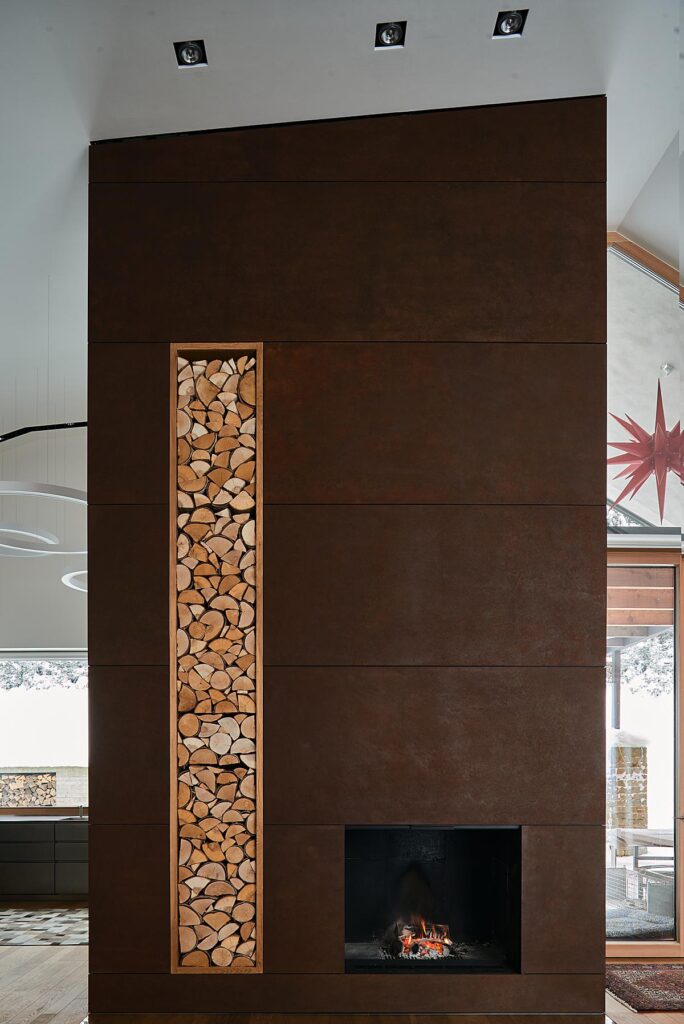
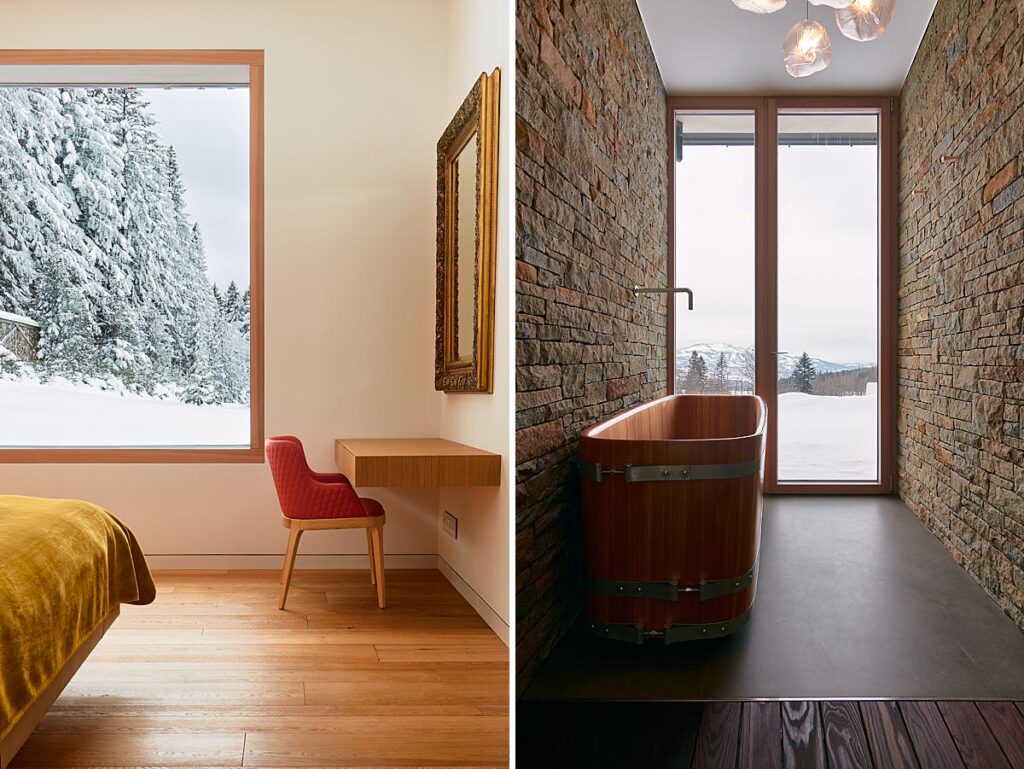
Back outside at twilight, the villa comes alive with a warm glow of light. We can make out the shapeliness of the structure as it stands out against the backdrop.
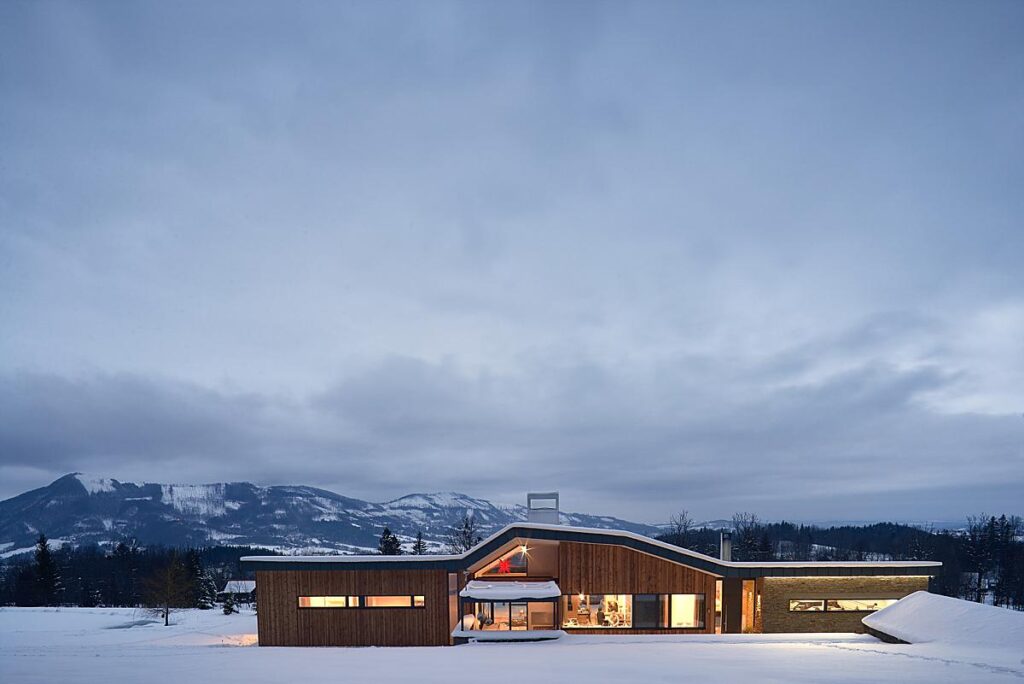
The lights of the villa draw our eyes and attention. Seeing it lit up in front of the dense forest helps communicate the home’s environment. What a gorgeous project!
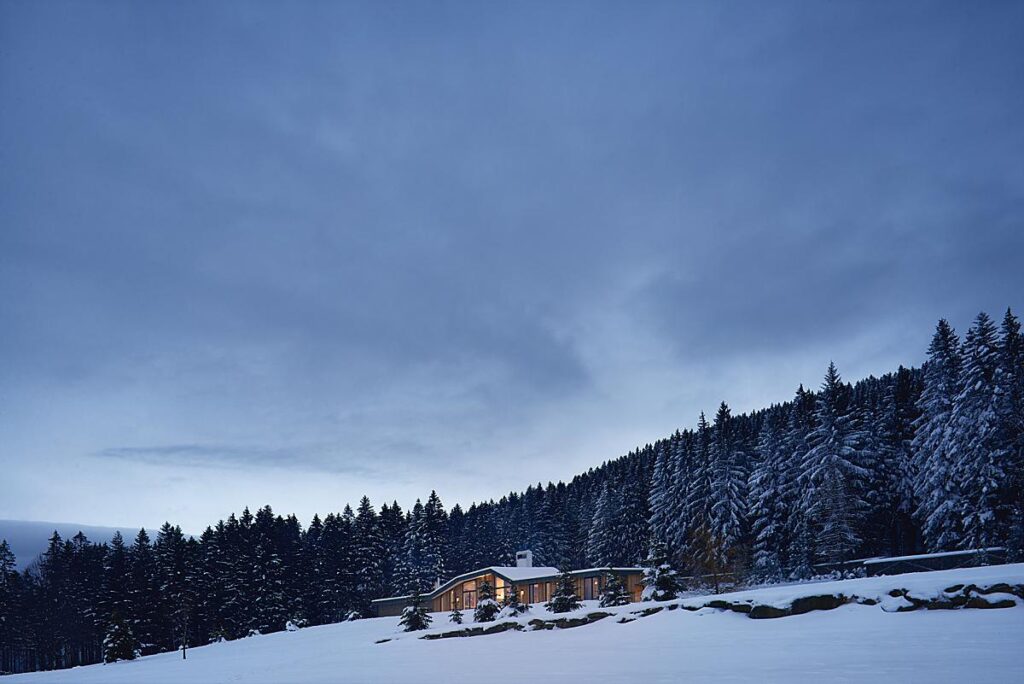
A big thank you to Alex for sharing his images with us. See more of Alex’s work on his site jiribednar.com or on Instagram @jiribednar.
If you have a project you’d like to be considered for Project of the Week, you can submit it here.
